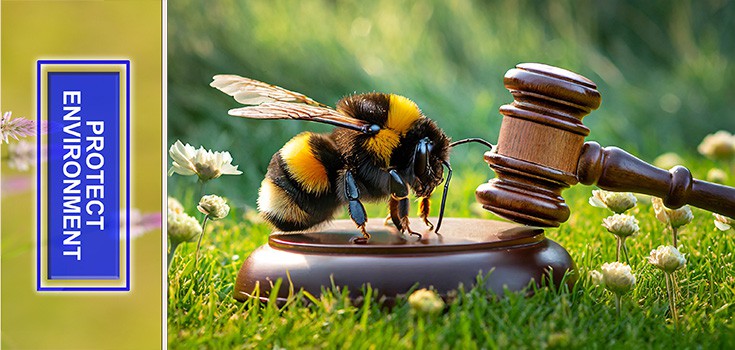EPA’s Pesticide Overhaul: A Step Forward for Wildlife, But Not Without Controversy

The EPA is taking steps to strengthen regulations concerning pesticides and their impact on endangered species. The intention is to provide faster and more efficient assessments to protect these species. However, the expedited approach, while aiming to be more protective, has raised concerns about its thoroughness and potential economic implications. The agency’s actions are a response to both the urgent need to protect endangered species and legal pressures from past lawsuits.
In a move that should help protect endangered species and all animals alike (including pollinators), the U.S. Environmental Protection Agency (EPA) is reportedly now deeply considering the potential pesticides pose to endangered species.
Good news, right? Many are optimistic about this revised approach, hoping it will bolster protections for species like the rusty-patched bumble bee, which has seen a significant decline in its population.
Aimée Code, who oversees the pesticide program at the Xerces Society for Invertebrate Conservation, expressed her enthusiasm, stating, “We’re thrilled that EPA is diving into this.”
But there are some issues we need to cover.
Fast-Tracked Environmental Decisions
Historically, the EPA’s approval process for pesticides involved an assessment of their impact on human health and the environment. This evaluation also mandated consideration from other environmental bodies in order to thoroughly cover the potential damage to endangered species.
The assessments required collaboration with the U.S. Fish and Wildlife Service (FWS) and the National Marine Fisheries Service (NMFS). The process is more thorough but can be prolonged for potentially years.
Bypassing the need for input from these organizations means the EPA can rely on its own preliminary risk assessments.
While the agency would still collaborate with FWS and NMFS, it wouldn’t rely on ‘mandated considerations’ from the environmental groups before instituting changes in agricultural practices.
The new process could be a positive one if the EPA puts in place proper protections, but it could also be a detriment as the organization is essentially fast-tracking the entire regulatory process and omitting required input from other federal environmental groups.
Was having input from the FWS and NMFS a detriment to begin with and bypassing input will help the EPA make better decisions for the ecosystem?
Related: EPA to be Sued After Endangering Pollinators with Bicyclopyrone
Ecosystem Protections Driven by Decade-OId Lawsuits
What’s concerning about this move is that it is driven by court orders mandating that the agency act in response to litigation covering over 1,000 pesticide products.
In 2011, the Center for Biological Diversity and Pesticide Action Network filed a lawsuit against the EPA. They alleged that the EPA breached the Endangered Species Act (ESA) during the registration or reevaluation of 382 pesticide active ingredients. This number was later reduced to 35 active ingredients, encompassing over 1,000 pesticide products. This case was termed the “mega suit” due to the vast number of pesticides involved.
But perhaps there is a true desire to make things right? Might be a tough sell to those who point to the EPA likely knowing that Roundup was carcinogenic for years.
The EPA’s Plan
The EPA introduced its ESA Workplan in 2022, titled “Balancing Wildlife Protection and Responsible Pesticide Use.” This plan outlines the EPA’s strategy to address the challenges of safeguarding ESA-listed species from potential pesticide harm. The plan was developed after public consultations and aligns with the agency’s ongoing efforts to adopt a more comprehensive approach to meeting its ESA obligations.
The settlement and the prior partial settlement outline specific actions for the EPA, many of which are detailed in the ESA Workplan. These actions include:
- Developing mitigation measures for particularly vulnerable species.
- Creating and implementing strategies for herbicides, rodenticides, insecticides, and fungicides to address their potential impacts on numerous ESA-listed species.
- Completing ESA work for specific pesticides.
- Hosting workshops to explore potential offsets for pesticide impacts on ESA-listed species.
As mentioned, the EPA will not await the completion of consultations from the FWS and NMFS before mandating changes in agricultural practices. The agency will also group risks based on the type of organisms affected.
The agency aims to finalize its herbicide strategy by May 2024 and conclude its list of protective measures for 27 susceptible species by the end of this year.
Jake Li, appointed as EPA’s deputy assistant administrator for pesticide programs in 2021, is spearheading this initiative. Reflecting on the urgency, Li remarked, “This is a sprint right now for us after 40 years of neglect. We are trying to make the most sense out of a very difficult problem.”
